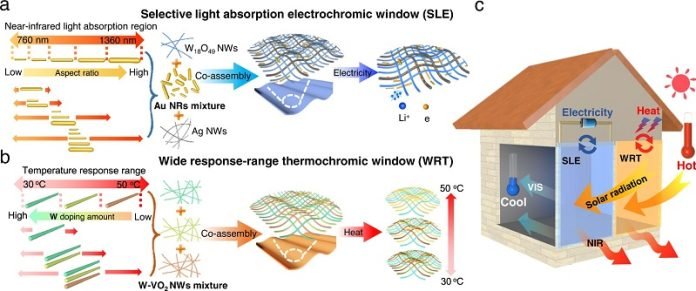
Have you ever wished your windows could adapt to the weather and keep your room cooler when it’s scorching hot outside?
Well, a team of scientists from the University of Science and Technology of China, led by Professor Yu Shuhong, has made this a reality!
Smart windows are advanced windows that block out the sun’s heat and help control temperatures indoors.
This is really important when designing energy-efficient buildings. The problem with existing smart windows, however, is that they also block some of the visible light, which can affect indoor lighting.
They can also struggle to change their behavior in response to changing weather or personal preferences.
But this is where Professor Yu Shuhong’s team has made a breakthrough. They took advantage of unique optical properties found in tiny materials called nanomaterials.
These nanomaterials, specifically gold (Au) nanorods, can absorb some of the sun’s heat without blocking the visible light.
This means rooms stay brightly lit while reducing the heat from the sun.
The team achieved this by mixing together Au nanorods of different sizes and combining them with electrochromic nanowires (made of tungsten oxide) and conductive silver nanowires to create a neat mesh structure.
The best part? The color of these windows can be changed by using an external power supply, and they work even better at blocking solar light.
The team also developed smart windows that respond to temperature changes, called thermochromic windows. These were created by combining tungsten-doped vanadium dioxide (W-VO2) nanowires. These windows change color based on the ambient temperature, making them perfect for a hot summer day or a cool winter night.
These smart windows are capable of controlling the heat from the sun dynamically, based on the voltage applied or the surrounding temperature. This can save even more energy during the summer months.
This exciting research takes window design to a whole new level, using different materials to improve their optical properties.
This could pave the way for quick and large-scale production of these new, innovative windows, offering exciting possibilities for the future of energy-efficient building design.
Who knew windows could be this cool? The study was published in Nature Communications.



